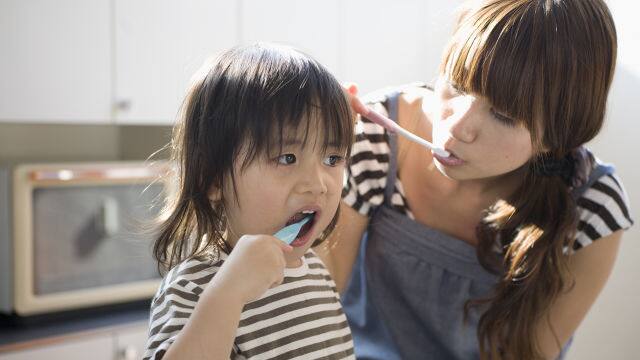A sparkling white smile is a sure-fire way to boost your confidence. Of the many ways to brighten your teeth, whitening toothpaste is among the simplest and cheapest, but is it effective? First, let’s talk about how whitening toothpastes work.
How Does Whitening Toothpaste Work?
Whitening toothpastes brighten your teeth in one of two ways: surface stain removal or bleaching.
As the name suggests, surface stain removers lift stains and plaque from the top layer of the teeth using abrasive ingredients like charcoal or silica. On the other hand, bleaching toothpastes use ingredients like hydrogen peroxide to penetrate deep into the teeth and lighten the tooth dentine inside. They also make the surface enamel more reflective.
What To Consider When Choosing A Whitening Toothpaste
Both types of whitening toothpaste are effective at brightening the teeth, but the right choice for you depends on several factors.
Results
Because whitening toothpastes with bleach physically whiten the tooth structure itself, they tend to give quicker, better results than surface stain removers.
Enamel Health
As well as buffing away surface stains, Better Health says that abrasive ingredients like charcoal can erode your dental enamel. This can damage the structure of your teeth and leave you more vulnerable to sensitivity, tooth decay and gum disease.
A toothpaste with fluoride can re-mineralise and fortify your enamel, which protects you from both enamel loss and further staining.
Gum Irritation
If you’re concerned about enamel loss, you may decide to opt for a whitening toothpaste with bleach instead. However, take into consideration that the bleaching agents are more likely than surface stain removers to irritate the gums, so they might not be suitable if you have sensitive gums.
Safety
Not all whitening toothpastes are created equal. The ADA
recommends choosing a toothpaste bearing their Seal of Approval, indicating that the product has been tested by a panel of dental experts and meets rigorous quality and safety standards.
Getting the Most from Your Whitening Toothpaste
If you drink coffee and red wine, or if you smoke or chew tobacco, you might find that you don’t get the bright, white smile you were hoping for. To get the most out of your whitening toothpaste, limit your exposure to these stain-causing substances.
Even healthy options like blueberries and beets can contribute to staining. Of course, we don’t recommend avoiding these, but you should drink lots of water alongside your meal and remember to brush your teeth 30 minutes afterwards to minimise staining.
Other Options For Whitening Your Teeth
If you have extreme staining or your teeth are naturally yellow or grey, whitening toothpaste may not brighten your teeth as much as you’d like. In this case, your dentist may be able to advise you on other options. These include:
- At-home cosmetic bleaching kits, which are left on the teeth for extended periods to give stronger results.
- In-office whitening treatments with a medical-grade concentration of bleaching agent.
- Laser teeth whitening, which uses laser-generated heat to enhance the effects of the bleaching agent.
For those with a history of sensitive teeth or gums, your dentist may advise against whitening products, or may prefer you to have an in-office treatment under supervision. If you’re considering whitening your teeth, visit your dentist to ensure you get the best results – and the brightest smile!





